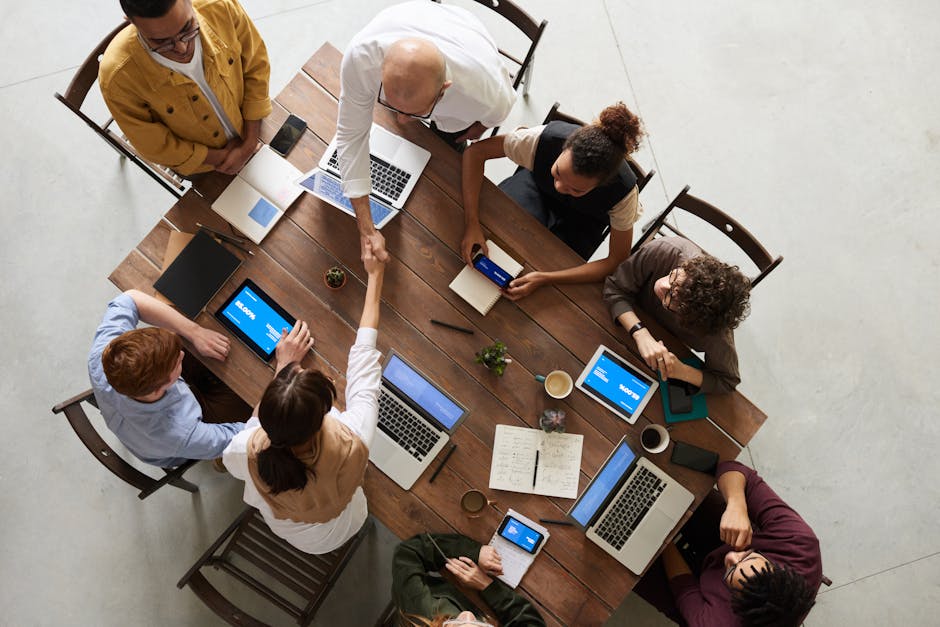How Liquidating Unwanted Goods Became A $644 Billion Business

Katie Schoolov: Inside this massive warehouse in Texas, the aisles aren’t lined with your typical merchandise. Unknown: This would be the antithesis of your traditional e-commerce fulfillment center. This is a bundle of snowflakes where every individual box might have a different set of accessories, might be slightly different in condition quality. Katie Schoolov: Every aisle is filled with returns from Amazon, Target, Sony, Home Depot and more, in the process of being liquidated. Sonia Lapinsky: These liquidators are coming in and they’re buying up all of this product in bulk.
They’re then packaging, palletizing it and reselling it. So it’s turned into a much bigger portion of the industry than we’ve ever seen before. Katie Schoolov: Liquidation used to exist on the fringes of retail. Unknown: The liquidation marketplace used to be two people in a truck coming into the back of a warehouse store with cash on the barrel, trying to have special deals for special people.
It was very unsavory, very unregulated.
Tony Sciarrotta: We would shake hands with people at our tradeshows and you’d want to go wash your hands afterwards. It was low life buyers. And now it’s been raised to a new platform by companies like Liquidity Services. Katie Schoolov: We went behind the scenes at Liquidity Services to see how the only publicly traded liquidation company is helping turn the industry around. Unknown: We’ve sold road paving equipment, entire gymnasium floors, scoreboards, postal trucks.
We’ve sold delivery vehicles for utility companies. Katie Schoolov: Retail is in the midst of a transformation. Fueled in part by the pandemic, online shopping was up more than 11% this holiday season, and with returns on average three times more likely for online purchases, a record $761 billion dollars of merchandise was returned last year. Returns that aren’t sent for liquidation are often destroyed: incinerated or sent to landfills. Unknown: The reason the circular economy exists is to make sure these items find a home and keep it out of the landfill system.
Katie Schoolov: Now amid mounting pressure on retailers to do better, and a supply chain backlog causing a shortage of new goods, there’s a boom in the secondary market.
Liquidation hasn’t just gone mainstream, it’s a $644 billion business. And in 2008, it was $309 billion. And now it’s $644 billion. So it’s more than doubled over the last decade.
Unknown: This warehouse is 130,000 square feet, and we’ll do between 15 and 20 truckloads of product a day through this building. Katie Schoolov: We take you on an exclusive tour inside the wild, booming business of processing and reselling excess and unwanted goods on the secondary market.
With slim profit margins and unpredictable quality of secondhand inventory, liquidation hasn’t always been the business opportunity it is today. A lot of this used to be controlled by the mafia. It’s a good way to hide money, honestly, because nobody’s looking at returns, especially 40 years ago no one was looking at returns.
But in 2021, more than 16.5% of all merchandise sold was returned up more than 56% from the year before. For online purchases, the average rate of return is even higher at 20.8% up from 18%. in 2020.
Processing a return can cost retailers up to 66% of an item’s original price. Tony Sciarrotta: I would suggest that it’s possible part of the inflation is these huge amount of returns that have to be sold at a loss, is detracting from the profitability that a company normally has, and they have to raise their prices. Katie Schoolov: And then there’s the environmental cost. U.S.
returns generate an estimated 16 million metric tons of carbon emissions and create up to 5.8 billion pounds of landfill waste each year.
And retailers like Amazon, which says it doesn’t send any items to a landfill, incinerate some returns as a last resort. But sustainable shopping options are a growing priority for younger shoppers. Buying one used item, it saves 82% of its carbon footprint.
The boom in liquidation is really fueled by consumers wanting to buy those items and so it makes no sense to throw them in the garbage. They should be safely put back into circulation. What’s become a huge pain point for one retail sector is big business for another. Today there are thousands of liquidation companies. The biggest ones contract with the Amazons and Targets of the world to receive returns in bulk, then sort, process and sometimes refurbish them, then auction them off as individual items, pallets, or truckloads to other resellers or to individual consumers, like a growing segment of YouTube creators who’ve gained a following by unboxing returns pallets.
Unknown: It’s like a fancy version of dumpster diving but slightly more promising, safer and more legal.
This is a good jacket, though. Tag still on it. $50. Katie Schoolov: Other resellers have side hustles on sites like eBay or Poshmark.
Unknown: Some of the auctions I’ve done, nobody else is bidding and that’s when I get really nervous that maybe this box isn’t going to be that good. And there have been other ones where people are just going crazy and it’s a full out bidding war.
Katie Schoolov: So this item here, it’s probably going to go where and auction off for what kind of price? Unknown: This probably has anywhere from $10,000 to $15,000 of retail value. And we’re going to sell that for anywhere from $3,000 to $5,000.
Katie Schoolov: Bill Angrick founded Liquidity Services in 1999, with $100,000 of his savings. Unknown: My father and I used to pick up used books. Fast forward to the start of eBay, we realized that a marketplace model can create value for virtually any type of used item. Katie Schoolov: In 2000, Liquidity Services had its first major sale: a $200,000 marine vessel for the state of Georgia. By 2002, Liquidity Services reached profitability.
By 2006, it was listed on the New York Stock Exchange, where it’s seen a significant rise during the pandemic. Today, Liquidity Services handles returns for clients like Amazon, as well as the Postal Service’s unclaimed mail, items left behind at TSA checkpoints – think 14 pounds of assorted knives – and out-of-service military vehicles and other gear.
Unknown: Seven distribution centers, focusing on this circular economy challenge for ecommerce retailers, with over a million square feet of space. And we’ve now eclipsed over 4.8 million buyers on the platform.
Katie Schoolov: When pallets of returns arrive at this Liquidity Services warehouse in Garland, Texas, just outside Dallas, the first step is to unwrap it and figure out what’s inside and recycle all that packaging. This machine here is a Styrofoam densifier and it takes a full pallet and a half of styrofoam and it condenses it down into this 20 pound block of melted Styrofoam which then they send out to a third party which blows it back up into packing Styrofoam again.
Unknown: Cardboard, we probably do about 200 tons a year of cardboard recycled, 20 tons of Styrofoam a year, and about that same amount in electronics recycling. Katie Schoolov: We scan every item that comes in and make sure that they can put it in the manifest. Items are sorted by workers like Carlotta Barnes, who’s been at the Garland warehouse for nine years.
We take it out and make sure that the product is okay to sell. When items are ready for resale, they’re wrapped back up. We see we’ve got a couple Christmas trees.
We got some decorative pillows, some furniture, a desk maybe. How much is something like this probably going to auction for?

Unknown: So it’s going to start for $100 on Liquidation.com. And then the market is really going to set what that is going to sell for. Katie Schoolov: They’re stacked into aisles, awaiting their turn for auction on one of the Liquidity Services’ marketplaces. There’s Liquidation.
com, where pallets of returns and some individual items are auctioned off to the highest bidder.
Secondipity for direct sale of individual items, and GovDeals for those unclaimed packages, TSA items or outdated military equipment. While Liquidity Services is one of the biggest liquidators, there are thousands of companies in the booming space. One is GoodBuy gear, which sells gently used baby and kids gear as an alternative to Facebook Marketplace or Craigslist. This space in particular really warrants a trusted third party because, you know, it’s stuff that your baby’s going to sleep in or sit in and eat in.
Kristin Langenfeld started GoodBuy Gear after her youngest, who’s now six, outgrew a particularly bulky item.
It’s $150 to buy it brand new and it was amazing for the few months that she used it and then after that, zero use for it, you know. A big eyesore in the middle of your room. Another big player in the space is B-Stock, which runs branded liquidation marketplaces for huge clients like Amazon, Walmart, Home Depot and Costco. Unknown: We sold somewhere in the vicinity of $150 million individual items last year.
Katie Schoolov: Howard Rosenberg founded B-Stock after six years at eBay, where he saw the benefits of specializing in liquidation for others, at scale.
Unknown: So companies typically don’t want to spend a whole lot of time and effort focused on that little slice of the pie. They want to focus on the 99% slice of the pie. Katie Schoolov: Liquidated returns reenter the circular economy through individuals selling on Craigslist or eBay, pawn shops, flea markets and thrift stores. Sonia Lapinsky: Wanting to reuse, wanting to have less of an impact on the environment.
They’re also getting a good deal, right? Like we’re being trained not to pay full price. And if you can kind of do both things at the same time and get a good deal, I think that’s what all the younger generations are about. Katie Schoolov: But a lot of returns can’t go right back out for resale. Unknown: You can see it still has plastic on it from the original manufacturer.
And so we know this is a very new unit, never been used, but it was damaged during shipping. And what we can do is replace this glass with a donor glass from a unit not functioning.
Katie Schoolov: The refurbishment department is a big part of Liquidity Services’ business. And there’s a lot of TVs here. How many are you doing every day, would you say?
Unknown: We do about 100 TVs a day and they sell for anywhere from 60% to 70% of retail. My youngest has come and, you know, she’s amazed by the machines and she’s asked a couple of questions. Katie Schoolov: Stephen Boykins relocated with three of his four kids to manage the Garland warehouse.
He’s been with the company six years. Unknown: I try to explain it to her to where she understands and it’s like, hey, when you have kids, this directly will affect you and your kids.
This little piece of the operation that no one thinks about will have a vast effect over the next 50, 60 years. Katie Schoolov: Gen Z shoppers like Boykins kids have led a push for more sustainable retail options, boosting the overall popularity of secondhand shopping across all generations. In a survey of 1,000 consumers 81% of baby boomers participated in resale in 2021, up from just 39% in 2019. Refurbished electronics have also gained popularity because of the shortage of new goods. Unknown: When we get a refurbished product, we get really good recoveries back from it, so probably 80% to 100% of recoveries depending upon the seasonality in the market.
But right now the market is very strong because of the supply shortages on the forward side. Katie Schoolov: Refurbished consumer electronics like noise-cancelling headphones or HP laptops are in high demand, but also high-end refurbished items like the machines used to make microchips.
Unknown: We’ve seen Fortune 500 companies access used equipment on our marketplace because the time to ship is shorter in the circular economy then originating a newly manufactured good, putting it on a vessel, transporting it across the ocean, to a port that’s likely backlogged for six to eight months. Katie Schoolov: And as the secondary market grows, many retailers are now selling refurbished items directly. Amazon has entire sections of its site devoted to this.
There’s Warehouse Deals for used goods, Amazon Renewed for refurbished items, Amazon Outlet for overstock, and a tongue-in-cheek daily deal site called Woot that sells a $10 bag of crap. BestBuy now has an online outlet where it sells open-box appliances and TVs and HP has an outlet with refurbished computers and more. Unknown: We’re going to remanufacture it and remarket it with an HP warranty. Or we’re going to sell it as-is to a certified contracted partner, who will then either re-manufacture it themselves and sell it with their third-party warranty or part harvest it and and sell the parts.
Katie Schoolov: The liquidation boom has spawned another trend, too.
Hundreds of bargain bin stores are popping up all over the country with names like Dirt Cheap and Treasure Hunt Liquidators, where dozens of customers line up, sometimes even camping overnight to get first pick after weekly drop-offs of liquidation pallets. They dig through bins and bins of returns, in search of trending items they can flip for a profit. Tony Sciarrotta: Stores like Big Lots, Bargain Hunt, Ollie’s Bargain Outlet etc. All of these stores and then eBay, and even Amazon has gotten into it. So they’re selling the returns back to consumers because, again, 90% of the time, nothing wrong with it.
Katie Schoolov: Liquidity Services has its own take on the direct-to-consumer trend.
At the company’s new AllSurplus Deals warehouse that opened in Phoenix in October, customers pick up items they’ve won in online auctions that usually start at $5. This is especially helpful for liquidating bulky items like kayaks. But something like that is going to be very expensive to ship, no? Because it’s so big.
Unknown: That’s the beauty of our fulfillment center network. We can take these items back directly from consumers, and then have consumers bid online and pickup at our warehouse. Katie Schoolov: Angrick plans to open a second AllSurplus Deals warehouse in Dallas later this year. Unknown: The more people discover that hey, there’s nothing inherently wrong with this product. I trust the marketplace that sold it to me.
I can save significant dollars. That’s really benefiting all parties..








